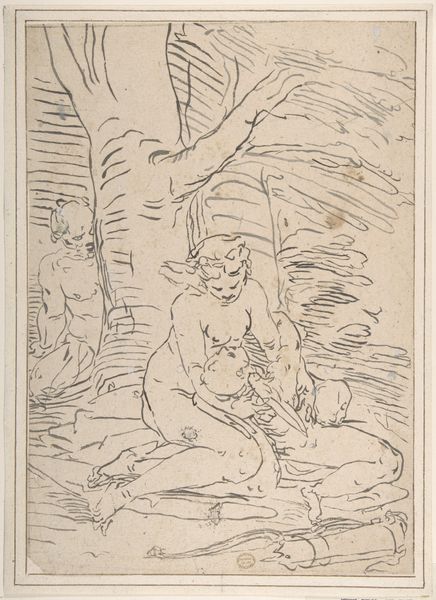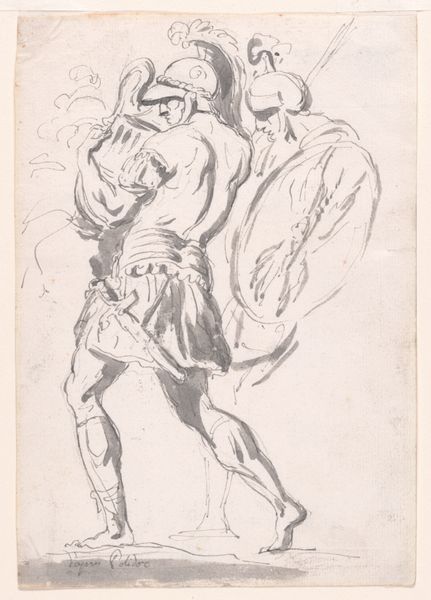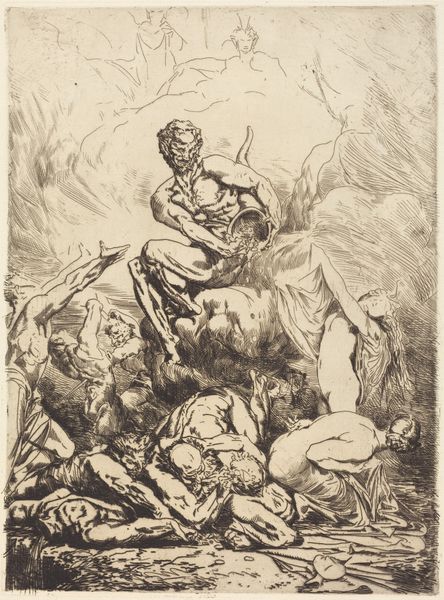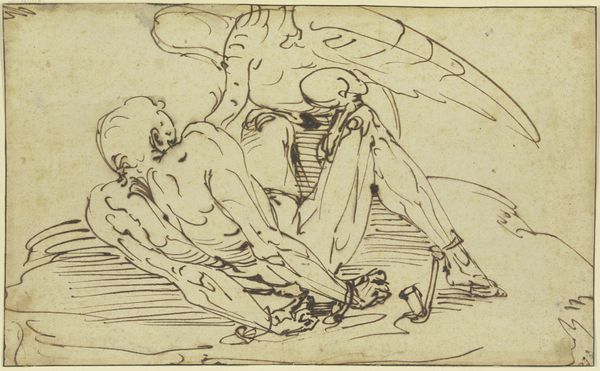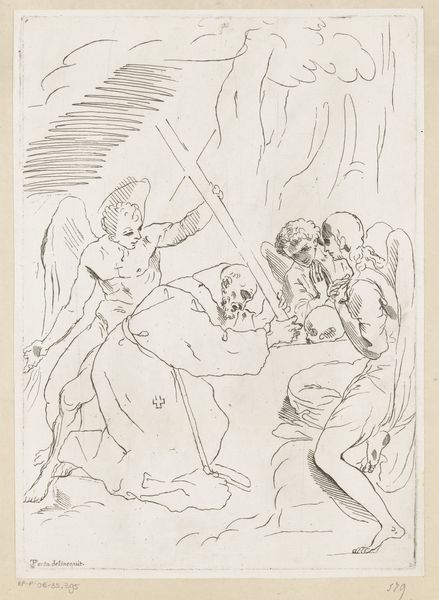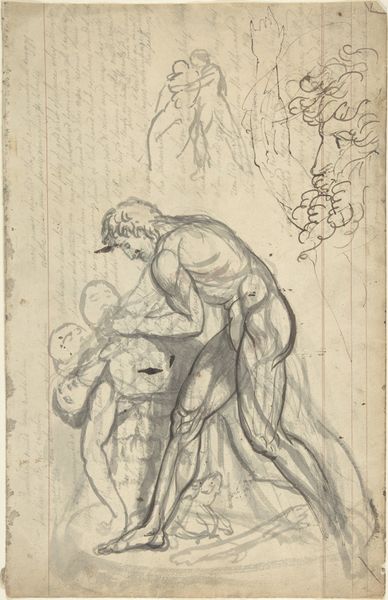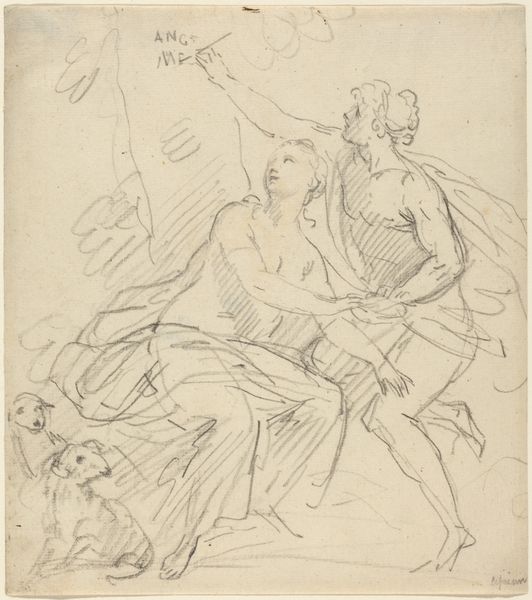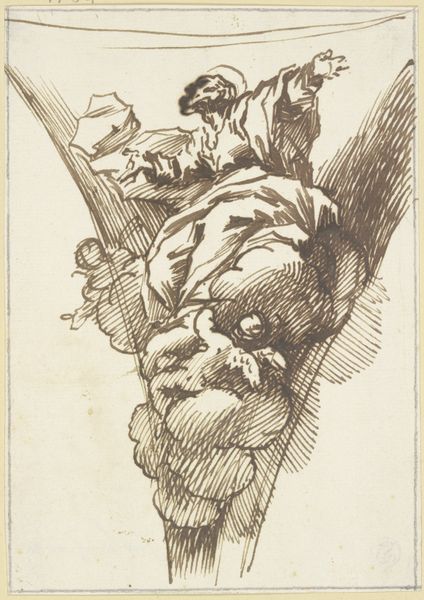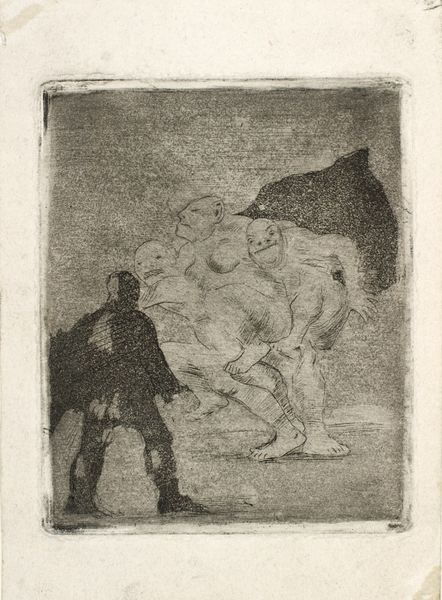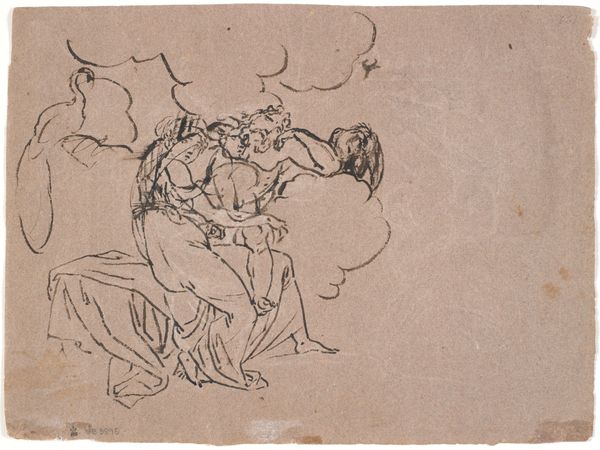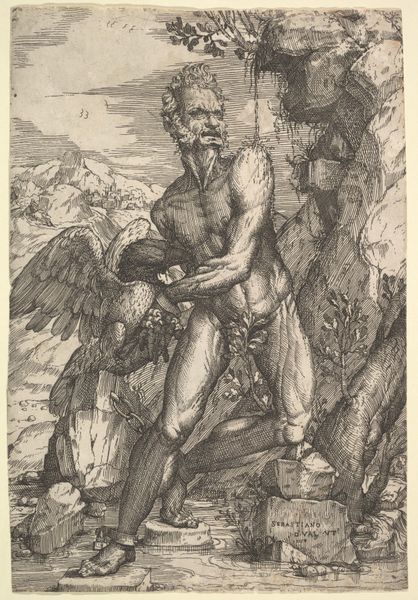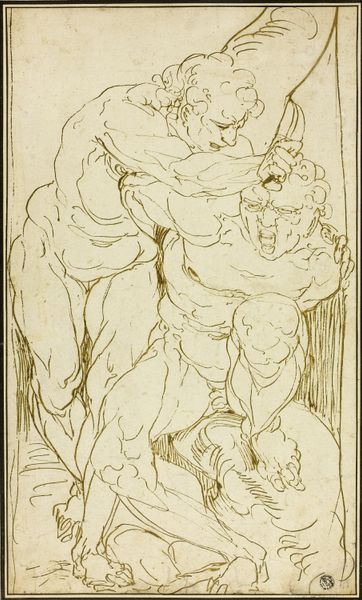
drawing, print, paper, ink, pencil, graphite, pen
#
drawing
#
narrative-art
# print
#
pen sketch
#
pencil sketch
#
figuration
#
paper
#
ink
#
romanticism
#
pencil
#
graphite
#
pen
#
history-painting
Dimensions: 504 × 386 mm
Copyright: Public Domain
Editor: This drawing, "Hercules Killing the Mares of Diomedes," created by Henry Fuseli around 1800-1805, is quite striking. Rendered with pen, pencil, graphite, and ink on paper, the scene feels chaotic, violent, and also monumental. What do you see in this piece that stands out in terms of form? Curator: Indeed, the immediate impact stems from the artist’s dynamic use of line and tonal contrast. Note how Fuseli employs a predominantly linear approach to define form, but then strategically uses washes of ink to create areas of deep shadow, thus emphasizing Hercules’ musculature and the turmoil of the scene. Where does your eye first go and why? Editor: I'm drawn to Hercules’ raised fist and then down to the horse's head on the bottom. The intense darkness contrasting with lighter strokes really directs my vision. Can you say more about this approach to composition? Curator: Observe the masterful organization of shapes and lines, especially the strategic arrangement of the bodies – human and animal – in a pyramidal configuration. The diagonal lines inherent in Hercules's stance and the rearing figures converge to create a sense of instability and frenzied energy, heightened further by the agitated pen work. Notice also how the unfinished areas contribute to a sense of drama, inviting the viewer to complete the narrative. Editor: So, the incompleteness is intentional, furthering the feeling? Curator: Precisely. It pushes the boundaries of form. We are not presented with a neatly resolved composition but rather a glimpse into the heat of action. The tension comes, then, from this push and pull between legibility and abstraction. What is your take-away? Editor: I now appreciate the dynamism and power achieved through formal qualities like line, contrast, and the strategic use of unfinished space, heightening the dramatic effect of this classical subject matter. Curator: Yes. Form dictates our reading and the way we relate to the narrative presented to us.
Comments
No comments
Be the first to comment and join the conversation on the ultimate creative platform.
